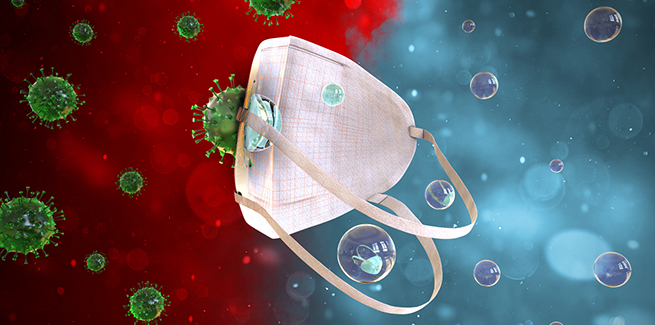New NIH study: How to sanitize N95 masks for reuse

If you’re lucky enough to have a stash of N95 respirators, a new study from the National Institutes of Health (NIH) can help you extend their life—at least for a little while.
And right now, most hospitals can use all the help they can get.
In general, N95 respirators are designed for a single use prior to disposal. On their website, the US Centers for Disease Control and Prevention (CDC) define “reuse” as “the practice of using the same N95 respirator for multiple encounters with patients but removing it (‘doffing’) after each encounter. The respirator is stored in between encounters to be put on again (‘donned’) prior to the next encounter with a patient.”
In their NIH study, Robert Fischer, PhD, a researcher at the National Institute of Allergy and Infectious Diseases in Hamilton, Montana, led a team of researchers who analyzed four readily available and often-used decontamination methods: ultraviolet light (UV), a solution of 70% ethanol, dry heat (70° C), and vaporized hydrogen peroxide (VHP) to test their effectiveness in decontaminating N95 respirators infected with SARS-CoV-2. They also assessed the function of the N95 respirators after multiple wear and decontamination sessions.
All four methods eliminated detectable SARS-CoV-2 virus from the fabric test samples, though the time needed for decontamination varied. VHP was the quickest, requiring 10 minutes. Dry heat and UV light each required approximately 60 minutes.
Volunteers from the Rocky Mountain Laboratories wore the masks for two hours to test fit and seal.
Decontamination with VHP and UV light were deemed the most effective methods, as both appeared to preserve the integrity of the masks’ fit for up to three uses. Dry heat was also found to eliminate the virus on masks but was effective for only two uses.
Masks that had been decontaminated with ethanol spray did not function effectively after decontamination, so Fisher and his colleagues do not recommend that method.
Their paper has not yet been peer reviewed.
So far, the CDC hasn’t approved any method for decontaminating masks, but has said that it doesn’t object to using these sterilizers, disinfectants, devices, and air purifiers for effectively killing the SARS-CoV-2 virus.
So for the moment, if you have N95 respirators you’re looking to reuse, that’s as close to a “go” as you’re going to get.
Photo credit: © iStock/I am 3D animator artist



